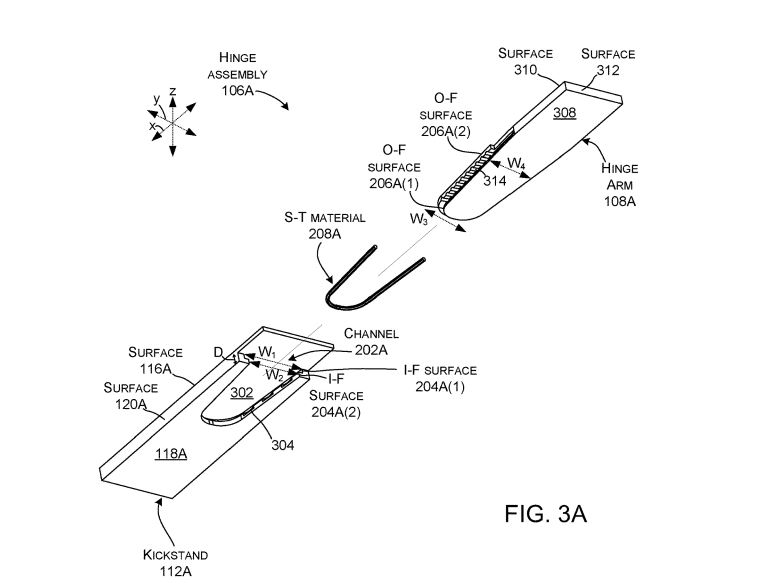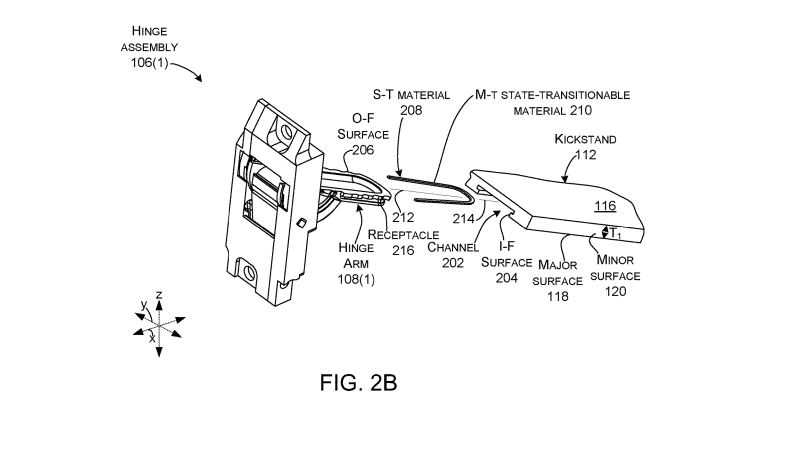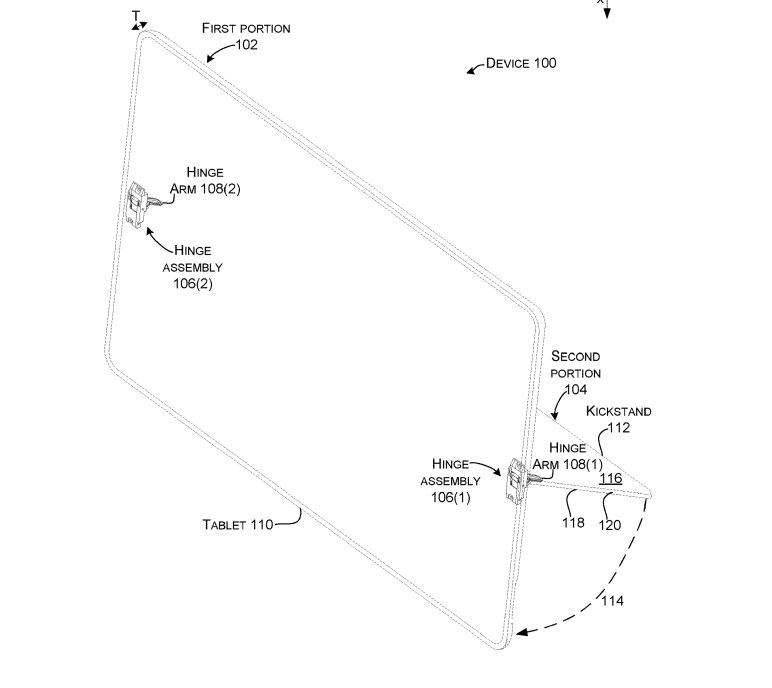A Microsoft patent has emerged that could provide some additional details on the kickstand hinge of the next Surface Pro. The language in the patent describes “secured device portions” and the inner workings of a hinge mechanism for a computing device in space-constrained environments.
Filed with the U.S. Patent Office on September 8, 2017, the now public patent details that the new mechanism is for devices that have “portions secured together.” With a Photo of a Surface-Pro like device attached, it acknowledges a tablet and a kickstand “rotatably secured by a hinge assembly.”
The patent even describes a redesigned hinge assembly with a flattened hinge arm, that can be secured to the kickstand without the use of fasteners. This would be accomplished through the use of “state-transitional materials,” which can be either be an adhesive or a thermoplastic material. It would be a change from the current generation Surface devices, where the kickstand is attached to the device with screws.
“One example can include a first portion and a second portion that defines a channel. The example can also include a hinge assembly rotatably coupling the first portion and the second potion, the hinge assembly including a hinge arm that is fitted to the channel and retained in the channel by a state-transitional material,” explains the patent.
Interestingly, the patent goes on to describe additional uses for this hinge on other devices, perhaps even Microsoft’s dual-screen Andromeda phone and Surface Centarus. “Beyond the illustrated tablet configuration, in other implementations, the first and second portions can be manifest as another form factors. In another example, the first and second portions could be manifest as two sides of a foldable smartphone or wearable smart device,” explains the patent.
As usual, this filing does not specifically refer to any Microsoft products by name. The technology mentioned in patents also don’t always end up to making it to a final product, but it does hold promise. Previous patents from Microsoft have suggested the company could be considering a reflective rear display on the next Surface, and even consider slimming down the Type Cover keyboard so it is slimmer and lighter. We have a collection of these rumors and more for what we’re looking for in the next Surface Pro right here.





